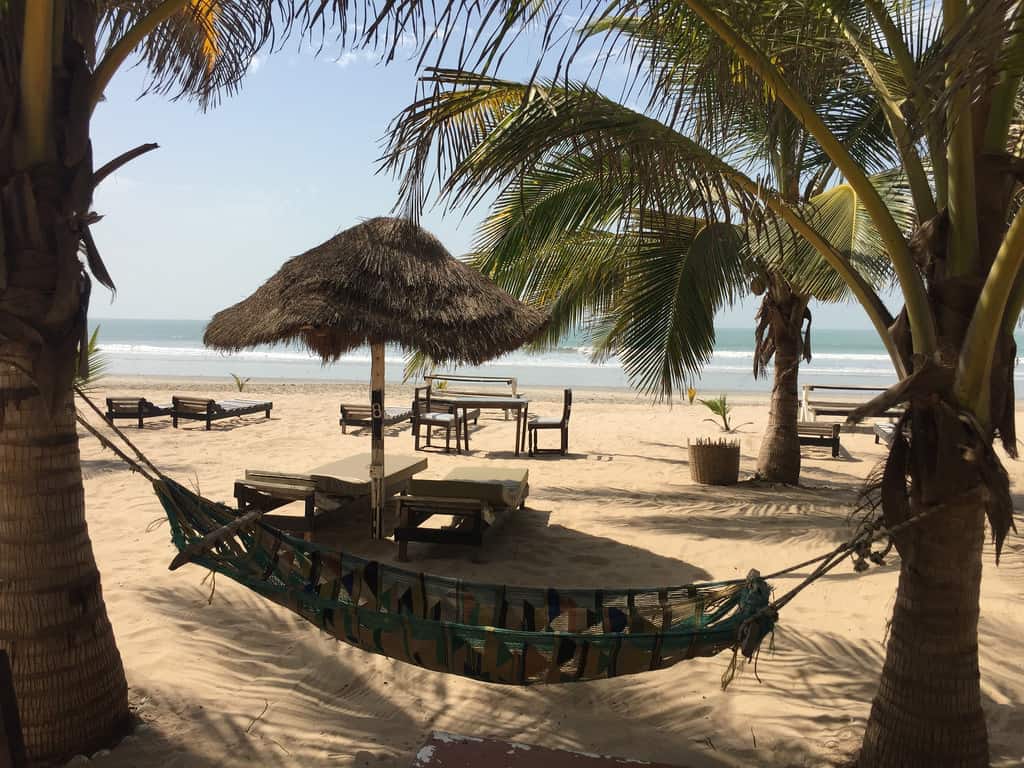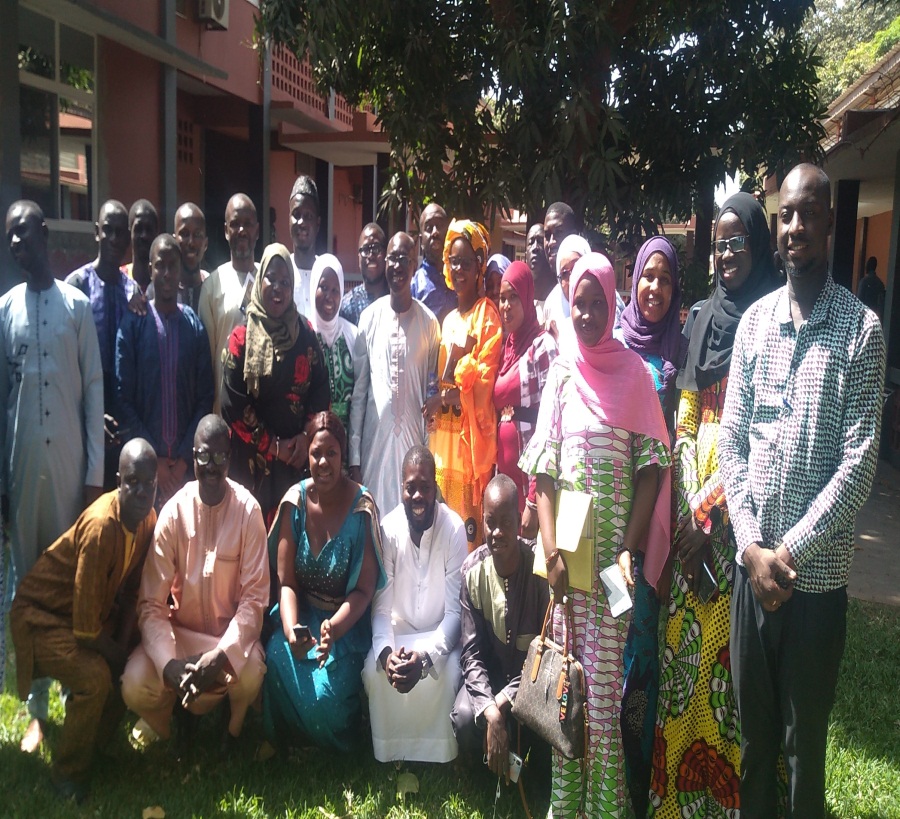Almamy Fanding Taal
‘The Gambia Ten Years of Nationhood’. It reads: “A climate that has been described as one of the best in the world, mile upon mile of such splashed beaches, tall coconut palms, blue tropical skies, a river that can take you deep into the heart of Africa…..” Ministry of Information, Broadcasting and Tourism- publication 1975:
Tourism is one of the main economic drivers and a significant generator of jobs and revenue for the Gambian economy .The tourism industry is as old as the republic as the official blurb above attests and it contributes 20.8 (%) of Gross Domestic Products of the Gambia in 2019 and provide direct and indirect employment for thousands of people.
However, the industry is yet to realise its full potential in the Gambia. One reason for this undesirable situation is the approaches that the Jammeh Government deployed since 1994, which continues to this day. The strategic twinning of tourism with culture into a new ministry singularly focused on developing tourism in the Gambia was a smart move.
Unfortunately, it was not well conceptualised because the new ministry was soon overshadowed by a statutory corporation, and both did not take a value chain approach to tourism development in the Gambia. The main comparative advantage of the Gambia then and now as a tourists destination is its geographic location and proximity to Europe and North America.
The cultural and historical links with the African diaspora in Europe and the Americas which Ghana and other West African states are leveraging to attract more African Americans to their shores has not been optimally utilisedby the Gambia Government.
The original products of the industry in the Gambia was winter sunshine, pristine sandy beaches, and six hours flight time from north Europe to a tropical paradise that is peaceful with very friendly people. The industry infrastructure was provided by Nordic investors in partnership with the Gambia Government.
The first beach hotels were built in the island city of Banjul. Atlantic Hotel is still the premium hotel in Banjul whilst Wadner Beach has not been operational for more a decade and Palm Grove Hotel was converted into Hamza Barracks after Jammeh acquired it from ill-gotten wealth. Due to the size of the island city and space constraints in Banjul the next chapters in the development of tourism in Gambia are written on the Kombo beaches a 40-mile stretch of pristine sandy beach.
First in Cape Point, Bakau with Sun Wing Hotel, Tropics Garden Hotel Fajara Hotel Novotel Kombo Beach Hotel Kombo Beach Hotel thereafter the groundbreaking Senegambia Hotel. A 50%-50% Joint venture between Salmer Sande AS and the Gambia Government. In the silver jubilee year of the republic the Kairaba Beach Hotel opened its doors. With a 5-star billing and a state-of-the-art conference facilities.
Appropriately named for the first president of the Gambia Sir Dawda Kairaba Jawara under whose leadership the Gambia emerged as more than a ‘probable nation’ into one of the best governed nation-states in Africa and the hottest tourism destination in West Africa.
With a liberal open economy, the Gambia was able to attract significant investments in the tourism sector. Banjul Breweries was one such investment with its internationally acclaimed range of brews and the award-winning Beer-Julbrew. On the part of the JawaraGovernment Central Bank of the Gambia, Gambia Ports Authority Gambia Commercial and Development Bank Gambia River Transport Gambia Produce & Marketing Board were established as statutory corporations and the National Investment Board all helped to provide an ecosystem for the tourism industry to thrive.
Prior to all these development the first commercial radio in Africa was established in the Gambia. Britt Wadnersuccessfully started Radio Syd in 1970 – in The Gambia licensed by the Gambian government – along with her daughter Connie. She also set up a hotel enterprise, Wadner Beach Hotel.
Initially broadcasting out of a ship docked off the Banjul Coast eventually was put on terra firma as Radio Syd giving opportunities to Gambia’s first private broadcast Journalists to hone their skills journalists such as the late Deyda Hydara, the Doyen of Gambian Journalism AlhajiPap Saine who celebrated 30 years of The Point Newspaper in 2021 and Sarjo Barry AKA DJ Joe Barry all had their careers in broadcasting started at Radio Syd.
Is “Gambia the Smiling Coast of Africa” Enough?
Against this backdrop the above question is asked. The value chain starts with getting here. In the early days, this part of the value chain was dealt with by the counterpart investors of the Gambia Government with charter flights and commercial airlines such British Caledonia, Swiss Air, Sabena etc.
For the past 36 years The Gambia Experience UK based company initially offering only flights and holidays to the Gambia has grown its specialisation in the Gambia’s tourism value chain and offers to its clients the widest selection choice of hotels in the Gambia.
From the available data the highest number of tourist’s arrivals in the Gambia’s history was in 2014 with over 600,000 visitors and 2020 data shows a 65% dropped in the figures of 246,000 visitors attributable to Covid 19 global pandemic.
Unfortunately, the safety conditions and globally accepted tourism standards at the only airport of the Gambia have been flagged out as inadequate by airlines that frequently travel to the Gambia. In addition, the additional charges directly collected from in & out bound passengers are making the airport unattractive for tourists according to the Minister of Tourism & Culture Hon. Hamat Bah.
Consequently, getting to the Gambia is increasingly becoming a challenge, even though there is no national carrier like in Egypt, Morrocco, Kenya, Mauritius, and Rwanda top African tourism destinations, the Banjul International Airport has several daily flights. But more importantly what do you see, feel, hear, and do in the smiling coast of Africa ? the reasons for travelling for most tourists is to explore and experience first-hand a different culture and place.
To answer this question: a tourism value chain approach can simply be defined as a system that describes how hoteliers and tour operators in collaboration with the Gambia Government and SMEs CSOs receive or access resources as inputs, add value through various processes (planning, development, financing, marketing, distribution, pricing, positioning, among others) and sell the resulting products to tourists.
A tourism value chain approach to the development of tourism must be driven by the passion, pride and confidence of key stakeholders that ensure visitors will experience the best that Destination Gambia can offer.
A tourism value chain approach can be used as the methodology for analysing the process and identifying opportunities to increase value through positive action or the elimination of barriers or constraints. All these elements are missing in the Gambia’s tourism value chain making it a weak and unproductive chain.
In order to apply the tourism value chain approach properly, the Gambia Government and businesses need to establish and enforce: Inclusive and integrated policy frameworks for sustainable tourism development; Businesses need to demonstrate their commitment to sustainability in core business models and value chains with enhanced action; Individuals and civil society need to advocate for and adopt, consciously sustainable practices and behaviours. Destination stakeholders are a focal point for the destination’s value chain development.
Generally speaking, actors along a tourism value chain can be categorized into four tiers : Policy makers of the basic tourism product- MOTC+GTBOARD; Suppliers of products and service- GHA + Tour Operators; Tourism agents, and Tourists.
The Gambia Government through the Ministry of Tourism & Culture are the planners as designers of the basic tourism product are responsible for policymaking and planning and are displayed at the very beginning of the value chain. Tourism products and services include attractions, accommodation, restaurants, bars, souvenir shops, airlines, transportation and so forth, which were operated by Government in partnership with FDI. Now all these aspects of the value chain are owned and operated by private businesses.
How tourism can contribute to the Sustainable Development Goals SDG 8?
By promoting sustained, inclusive, and sustainable economic growth, employment, and decent work for all tourism employees, as services trade, is one of the top four export earners globally, currently providing one in ten jobs worldwide. Decent work opportunities in tourism, particularly for youth and women, and policies that favourbetter diversification through tourism value chains can enhance tourism positive socio-economic impacts.
Through strengthening linkages and opportunities in the tourism value chain the tourism value chain is a sequence of primary and support activities that are strategically fundamental to the performance of the tourism sector. Key activities of the tourism value chain encompass a range of processes linked to the tourism sector, such as policymaking and integrated planning; product development, promotion, and marketing; distribution and sales; and destination operations and services.
A systematic analysis of the tourism value chain Destination Gambia can be a useful tool to trace income flow in the tourism sector. Such analysis will identify which part of tourism income goes to lower end of the food chain, while also determining interventions to enhance tourism’s local economic and environmental impact. Such assessments can be supplemented by market assessments and by collaborating with stakeholders to identify future opportunities for engagement, supported by capacity building.
Combining value chain development and local economic development strategies can also enhance the functioning of the market system while supporting circular economy development and job creation. A number of actions can be taken to work with established tourism enterprises in order to strengthen their supply chains.
This requires engaging with businesses, as well as encouraging supply audits and new sourcing. It also requires collaborating with local producers suppliers to strengthen their capacity. Since tourism offers potential for new enterprise formation – as it requires low levels of technical skills or financial resources compared with other sectors – particular opportunities exist to establish micro-businesses in both direct and indirect parts of the tourism value chain.
These areas could include handicrafts, tour guide services, catering, maintenance, food supplies, cleaning, and various other activities. Priority should be given to supporting existing and newly established micro-, small- and medium-sized enterprises (MSME) through capacity building, including training on business skills, market access, ICT skills, accessible finance, standard-setting, and marketing.
For a value chain approach to be successful the Gambia Government must play a catalytic role in the development process in order to promote the interests of the stakeholders, help increase their incomes and provide opportunities to create wealth, curb inequalities in the level of development along the value chain, protect the environment, strengthen the scientific technological base for long term growth and safeguard the interests of future generations. These are matters which cannot be left to the free play of market forces. Strategic Government investments in these crucial areas is the key to creating a sustainable development strategy. The views expressed in this article are the author’s own and do not necessarily reflect The Voice’s editorial stance.




